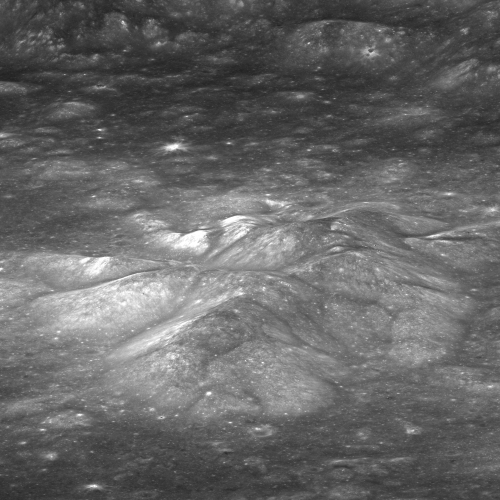August 27, 2013 report
Spectral analysis reveals Moon might have had water when it was formed

(Phys.org) —A research team with members from Johns Hopkins University Applied Physics Laboratory and the US Geological Survey has concluded that hydroxyl molecules found in the central peak of a crater on the moon indicates that the moon likely had a water component when it was first formed. In their paper published in the journal Nature Geoscience, the researchers suggest that because the rock in which it was found likely came from deep within the moon, it's not likely the hydroxyl was formed by solar wind flux or by other bodies striking its surface.
Bullialdus Crater is on the near side of the moon, situated near the rim of the much larger impact basin. At the center of the crater is rocky material that was pulled to the surface as the result of an impact, forming a peak. The team looked at data from M3 and Lunar Reconnaissance Orbiter Cameras available from NASA's planetary data system, which allowed them (via spectroscopic readings) to detect the presence of hydroxyl molecules—which is considered to be a sub-structure of water molecules.
This is not the first time hydroxyl has been seen on the lunar surface, of course, but other instances have been attributed to deposits created by interactions between solar wind flux and minerals on the surface or from other bodies that collided with the moon. Prior research has shown that when hydroxyl is created or deposited on the moon, it generally sticks to cooler parts of the surface and moves as the temperature changes—the hydroxyl molecules found in the craters central peak, however, do not move, indicating they are embedded, which the researchers interpret to mean that they were part of the rock that was pushed up from below when the crater was formed. They also noted that there was no evidence of hydroxyl anywhere else near the crater.
The researchers theorize that the impact that created the larger impact zone likely caused material to be pulled from deep within the moon and deposited nearby. The subsequent impact that caused the creation of the much smaller Bullialdus Crater, then caused material that had been spewed by the larger impact to be pulled to the surface of its central peak. And that material, the team concludes, likely included water.
More information: Remote detection of magmatic water in Bullialdus Crater on the Moon, Nature Geoscience (2013) DOI: 10.1038/ngeo1909
Abstract
Once considered dry compared with Earth, laboratory analyses of igneous components of lunar samples have suggested that the Moon's interior is not entirely anhydrous. Water and hydroxyl have also been detected from orbit on the lunar surface, but these have been attributed to nonindigenous sources, such as interactions with the solar wind. Magmatic lunar volatiles—evidence for water indigenous to the lunar interior—have not previously been detected remotely. Here we analyse spectroscopic data from the Moon Mineralogy Mapper (M3) and report that the central peak of Bullialdus Crater is significantly enhanced in hydroxyl relative to its surroundings. We suggest that the strong and localized hydroxyl absorption features are inconsistent with a surficial origin. Instead, they are consistent with hydroxyl bound to magmatic minerals that were excavated from depth by the impact that formed Bullialdus Crater. Furthermore, estimates of thorium concentration in the central peak using data from the Lunar Prospector orbiter indicate an enhancement in incompatible elements, in contrast to the compositions of water-bearing lunar samples2. We suggest that the hydroxyl-bearing material was excavated from a magmatic source that is distinct from that of samples analysed thus far.
Journal information: Nature Geoscience
© 2013 Phys.org




















